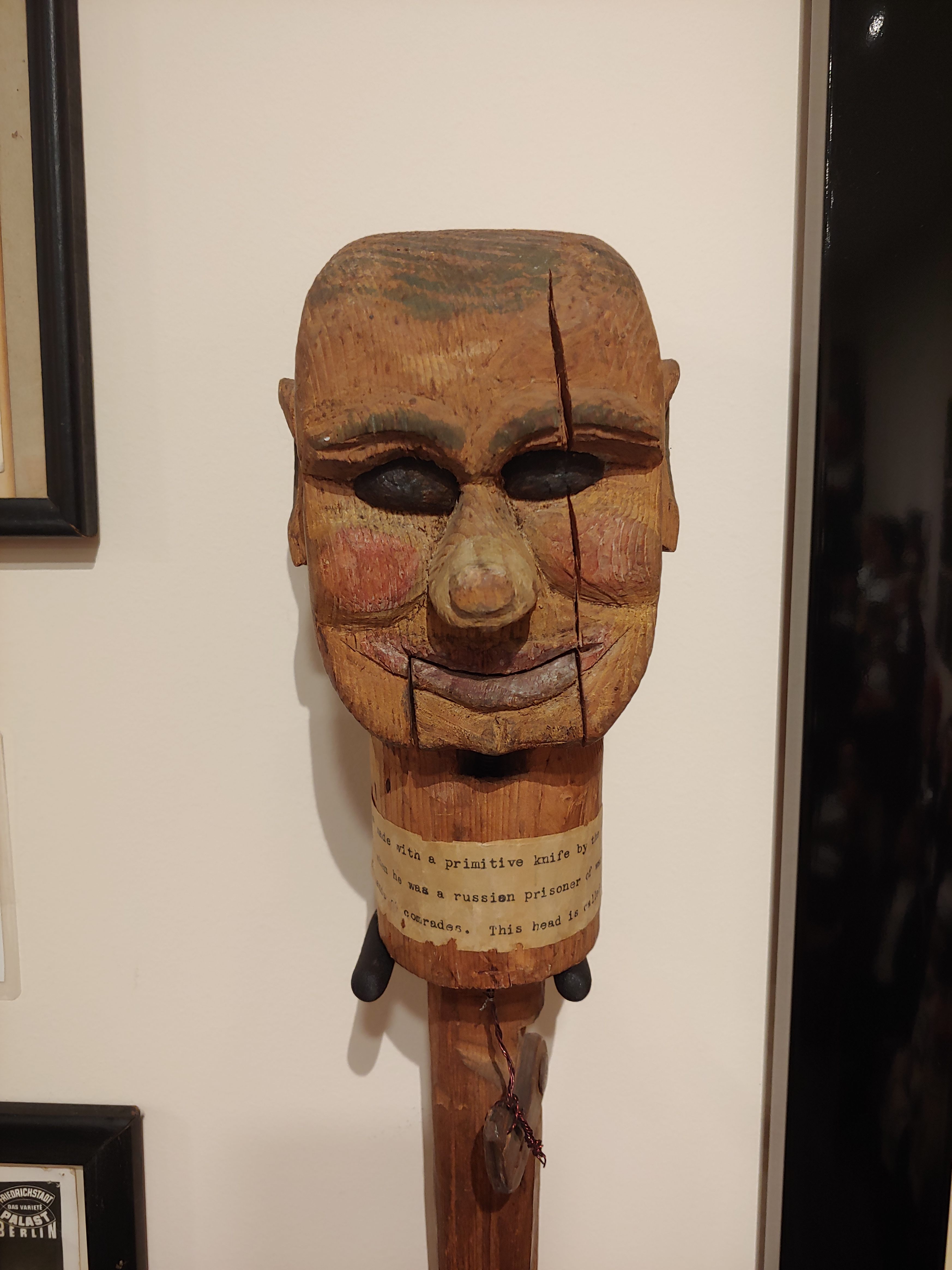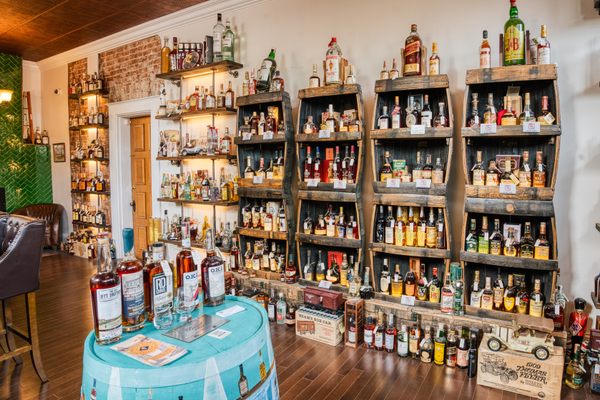
The World’s Only Ventriloquism Museum is in Northern Kentucky
Vent Haven is a must-see for lovers of oddity museums, quirky collections, or off-the-beaten-path places.
In the small town of Fort Mitchell, Kentucky, just across the Ohio River from Cincinnati, hundreds of dummies – from Shari Lewis’s playful puppet “Lamb Chop” to Jeff Dunham’s fuzzy, purple “Peanut” – line the walls of the only museum in the world dedicated to the art of ventriloquism.

Vent Haven Museum opened in 1973, spawned from the personal collection of founder W. S. Berger, who spent many hours backstage with his father, who was a stage actor.
While working his way up from mailroom clerk to president of Cambridge Tile Company, the Cincinnati native spent roughly 40 years amassing this stunning vault of artifacts dedicated to the ancient stage art.
It all began in 1910, when Berger was on a business trip to New York. While there, he purchased his first ventriloquist figure, Tommy Baloney, and the collection had begun.
From then on, Berger was interested in obtaining everything from dummies and puppets to ephemeral objects, like scripts and posters. Today, the Vent Haven collection consists of roughly 1,500 books, 1,145 dummies, over 5,000 photos, and countless other artifacts, from handwritten letters to playbills.
Present-day museum curator and director Lisa Sweasy learned about the museum through a coworker who, at the time, served as its director. “I was just curious about it as an oddity and a one-of-a-kind place,” Sweasy said. “And it just turned out that, at that time, she was ready to leave the position.”
In 2000, Sweasy took on the role and was soon launched into a wild world, swirling with colorful dummies, fascinating letters, and incredible stories. “I fell in love with it,” she said. “It’s a unique attraction in the world – a massive collection – and I immediately recognized how amazing the founder was.”
Collection Highlights
Standouts in the collection include artifacts that belonged to Chicago-born ventriloquist and Vaudeville comedian Edgar Bergen, father of Candice Bergen, who is considered a pioneer of the craft and best known for his acts with dummies “Charlie McCarthy” and “Mortimer Snerd.”

Replicas of the dummies are in the museum today; the original “Charlie McCarthy” can be found at the Smithsonian’s National Museum of American History.

Artifacts belonging to Paul Winchell, famous for his sidekicks, “Jerry Mahoney” and “Knucklehead Smiff,” are also popular components of the collection.
But perhaps even more mesmerizing than the collection itself are the stories each of the museum’s dummies have to tell.
One of Sweasy’s favorites doesn’t look like much. “It’s one of the most simplistic and crude looking dummies, and it’s never been painted.,” she said. “It’s made from a piece of firewood.”
But its story is incredible. The dummy was made by Eric Everty, a ventriloquist and prisoner of war during World War II. While being held captive in a Russian POW camp, he began whittling a piece of wood with a pocket knife.
“It had a newspaper body, and he scraped tar from between the logs of the cabin that he was housed in,” said Sweasy. “He warmed the tar in his hand and made little eyeballs and pressed them into the eye sockets.”

Crudely constructed, yes, but built with a greater purpose of keeping up the spirits of his fellow prisoners. “It’s an amazing story that, in spite of the conditions, he found a way to be a positive influence,” Sweasy said. “When he was liberated, he sent [the dummy] to Mr. Berger.”
Ventriloquist Jim Teter focused his dummy creations solely on U.S. Presidents, which can also be found at the museum. The trend started when Teter was in college. During the John F. Kennedy administration, someone on his dorm floor had made a clay bust of the sitting President as an art project.
Since the student had planned to throw it away, Teter asked for it and, from it, crafted a dummy. “He introduced it into his act and played ‘Hail to the Chief’ and did a good impersonation of Kennedy,” said Sweasy. “It just took off.” The President collection grew and, today, includes Lyndon B. Johnson, both George Bushes, and Bill Clinton.

One of Berger’s personal favorites, “Skinny Hamilton,” is a kind-faced dummy with rosy cheeks, looking dapper in his tuxedo and tophat. Skinny was crafted by Frank Marshall, and, as the story goes, when Berger was first admitted into a senior center in his final years, he was lonely and missed his collection. He asked a friend to bring him Skinny and a few other dummies, and Berger began hosting shows, cheering up not only himself, but the rest of the residents.
The stories seem to never end. “When people come for a visit, and I tell them to expect to stay for an hour and a half, often tours run much longer because whatever dummy they want to learn about, because I want for everyone who’s represented here to have their chance to be remembered – to have their story told.”
A Painstaking Process
If the collection itself weren’t enough to celebrate, the manner and circumstances in which Berger amassed his collection is worth noting. In Berger’s time, there was no internet – no eBay searches or Facebook Marketplace transactions, now popular among collectors. Instead, Berger relied on handwritten letters to source items.

“He had to build a web,” Sweasy said. He contacted performers, touring through the Cincinnati region and asked them what items they might have and who else they knew in the industry. “He would go to shows and talk with actual ventriloquists. He’d travel to Boston, New York, New Orleans – and it didn’t take long for him to become the center of that world.”
Berger also rubbed elbows with members of the Society of American Magicians and the International Brotherhood of Magicians to network. “Magicians use ventriloquism and many ventriloquists use magic,” said Sweasy, “so it’s a pretty close crossover.”
With decades of accumulated research and knowledge under his belt, in 1950, Berger founded The Oracle, a magazine dedicated to ventriloquism, which he published for about 10 years.
Equipped with thousands of Berger’s letters (he was thoughtful enough to keep a carbon copy of each letter he wrote and saved the ones he received) and other artifacts, Sweasy wrote “Vent Haven Museum: Its Past, Present, and Future,” in 2015.
“I want him to be remembered just for the sheer effort of what he did with his time,” Sweasy said. “Working here has given me such an appreciation of what one person can accomplish if they want to.”
Today, people come from all over the country and world, as far as Japan and Brazil and from all 50 states, to visit Vent Haven.
Like its visitors, dummy donations also come all over the world. “They have to have a moving mouth, and they have to be tied directly to ventriloquism.” So far this year, Sweasy has accepted 36 new dummies.
Ancient Art Form
Ventriloquism as an artform has deep historical roots. Evidence of the practice can be traced to ancient Egyptian and Hebrew archaeology, and it’s been a celebrated aspect of Western entertainment for over 150 years.
Described as the art of “throwing” one’s voice to make it appear as though another figure, or dummy, is talking, ventriloquism – like learning a foreign language or mastering a musical instrument – can take a lifetime to perfect.
“I think there’s an appreciation for any skill that does not use technology,” Sweasy said. “You’re not using a computer – you just had to put in the time, and I think people have an appreciation for what it takes to become good at something.”

Many modern-day practitioners are also honored at Vent Haven. One popular exhibit celebrates the career of famed ventriloquist Jeff Dunham, who took to the craft at age 9, when he received his first wooden doll.
Dunham visited Vent Haven as a teenager and remains one of its biggest supporters. Today, he sells out massive arenas on global tours with spunky characters like “Peanut” and “Achmed.” Dunham’s earliest professional figures are on display at the museum, in addition to “Jose Jalapeno” and many of the mass-produced toys he has made.
Honoring living legends is important, but so is sharing the stories of bygone leaders of the craft.
“Preserving the ideas of entertainment history is so important,” said Sweasy, “And giving credit to those initial innovators and this human skill that takes rigor and discipline. You have to be willing to be bad at it first. You have to be willing to stumble and to not quit. And I admire that in anyone.”
Vent Haven Museum is located five miles south of Cincinnati at 33 West Maple Avenue in Fort Mitchell, Kentucky. The museum is open seasonally from May 1 through September 30, by appointment only. Tours cost $15. Online scheduling is encouraged. Groups of more than 10 should phone or email to schedule a private tour. Allow an hour to 90 minutes for tours. For more information, visit venthaven.org/schedule-a-tour.













































Follow us on Twitter to get the latest on the world's hidden wonders.
Like us on Facebook to get the latest on the world's hidden wonders.
Follow us on Twitter Like us on Facebook